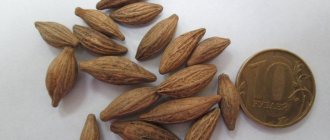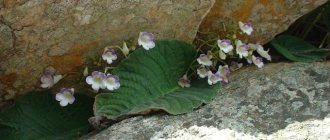The orchid is considered a diverse species of the flower world. There are so many beautiful flowers of this species! Flower growers love this plant very much for its unusual beauty.
An orchid can be found in any size and color; it can have a long stem with sparse inflorescences, or it can form a bud with a dozen flowers. It is pollinated by insects, and each species is pollinated in its own way.
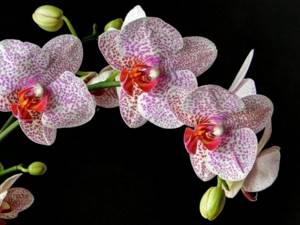
There is a type of flower that lures insects with its scent and then shoots out pollen. Dry orchid seed is filled with a large number of small seeds. Flowers live for a very long time; with proper care, they can please the eye for more than 80 years.

Phalaenopsis
This particular type of plant can often be seen on the windowsills of houses or in a flower shop. In Asia, this orchid grows well in open ground, as well as on trees in forests where there is high humidity.
Phalaenopsis, in open nature, reaches two meters in height, and indoor ones do not exceed 50 cm. This genus has more than 40 species. Externally, the flowers are very beautiful, more often they are painted in several shades at once, for example, the pink color smoothly flows into a white shade.
This type of plant may be burgundy in color. Blue, yellow and even black. Externally, Phalaenopsis is distinguished by thick stems, and the leaves are oval in shape and grow at the foot of the roots.
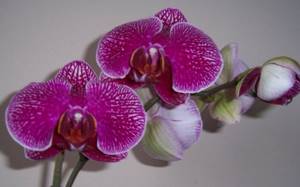
Variety varieties
Katasetum
A beautifully blooming orchid with fragrant flowers of various variegated colors. The flowers often form garlands. A distinctive feature is sexual dimorphism. Belongs to the shooting species.
The smell changes throughout the day: in the morning - turpentine, in the evening - rye bread.
Katasetum.
Clovesia
Small specimens that take up very little space in collections. The collections feature hybrids.
Some species have camphor notes in the aroma, and some smell like cinnamon. Resistant to rot.
Clovesia.
Cycnohis
They are distinguished by garlands of flower stalks . The curved column of the flower resembles a swan's neck. There is dimorphism.
Unpretentious at home . They grow well in hot apartments with plenty of sun. It has the scent of jasmine or ripe fruit.

Cycnochis.
Mormodes
Presented in culture as a hybrid with almost black flowers. Smells like spices and herbs.
Because of the shape of the flower it is called the “goblin orchid”.
Mormodes.
Dressleria
Does not go into a dormant period and does not tolerate dryness. Grows at high altitudes above sea level.

Dressleria.
Biological features
All Carrot orchids are epiphytes - to receive more light in natural conditions, they attach themselves to trees, climbing them as high as possible and wrapping the trees in a continuous bright blanket.
Depending on their habitat, these tropical beauties can survive at high altitudes above sea level (up to 1.5 thousand m).
All representatives of the group belong to deciduous plants . They have a clearly expressed seasonality in their life cycle:
- in summer - rapid growth, flowering and formation of above-ground tubers;
- in winter - a dormant period in the form of a “root vegetable”, the shape of which is similar to a cigar or carrot.
The flowering time of different types of Carrots differs both in timing: in summer or after emerging from hibernation, and in the number of flowers (single or several dozen), their diameter (2-20 cm) and color.
Plants produce fragrant flowers that do not fade within 2 weeks. The size of the orchids themselves varies significantly within the genus (10 – 70 cm), but all species have a powerful and succulent ground part.
Distinctive features
Representatives of the genus come from the tropical forests of South and Latin America. Interestingly, most species are native to the forests of Brazil .
Since the plants are deciduous orchids, they have clearly defined two periods of the annual cycle. In early spring, a new pseudobulb begins to develop, grow and flower. In autumn and winter there is a phase of rest or hibernation.
IMPORTANT! Specimens of the genus Catasetum belong to plants with flower dimorphism, when one specimen can produce male and female flowers in turn, or both species simultaneously, depending on the conditions of detention.
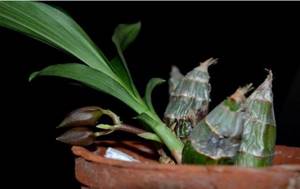
Carrots have a special type of pollination. Pollen intoxicates the insect that decides to feast on it.
It loses its orientation and ends up in the orchid's pitcher, where a small amount of liquid brings the insect to life.
Getting out, the pollinator becomes covered with a layer of pollen and flies to the next object.
Ludisia
The plant is the smallest, reaching only 30-35 cm in height. The flowers of this type are primitive, small, oval-shaped leaves of dark green color with brown veins.
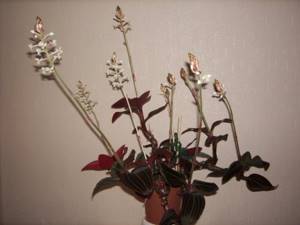
The stem ends in a corolla with flowers. Unlike other species, Ludisia does not smell so expressively; it prefers to bloom in winter, while the rest of the species pleases the eye with flowers in spring and summer.
Where can you buy orchids
These beauties are sold today both in large chain stores and in small flower shops. There are catalogs of online stores and large hypermarkets that contain different types of orchids. It is best to purchase healthy flowers from reputable flower shops, since in hypermarkets there is a high probability of buying an infected or diseased plant.
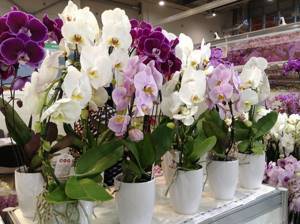
Shelf of orchids in a store
The price depends on the type, size and supplier. On average, the cost of an orchid varies from 1000 to 4000 rubles. If there is such a trusted supplier or store in your city, write about it in the comments.
Where can you find an orchid?
Many people are accustomed to seeing and admiring orchids only in flower pots. Few people know that orchids are able to live on other plants without causing them any harm.
Orchids adapt well to their environment, so they grow all over the world in a wide variety of places. The most important organ of a given plant is the root, it is thanks to it that they cling to another plant, and also receive moisture and feed on it.
Features of planting orchids at home
A person is accustomed to seeing an orchid in an ordinary flower pot with soil. Undoubtedly, it can grow fully in a pot, but it is advisable to use peat, crushed bark, sand and the soil itself as soil. Flower growers have recently been buying special soil for orchids, so it has all the necessary minerals and substrates.
When choosing a bowl for a flower, take a closer look at a white or pink color, so the orchid will suffer less from direct sunlight and the rhizomes will not get too hot.
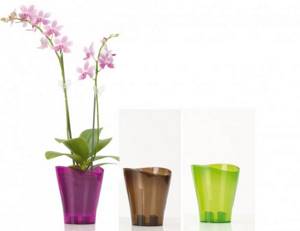
When planting, you need to be careful with the roots, they break very easily. After placing the soil in a bowl, do not press it down too much; air should flow under the roots.
Types and varieties of Phalaenopsis
Since ancient times, breeders, crossing different species and varieties of orchids, obtained new hybrids that differed in their appearance, the color of the petals and the duration of flowering. Plants with white or pure pink large flowers on tall, strong peduncles were considered the most valuable. At the same time, the standard image of Phalaenopsis arose with traditional porcelain-white, soft pink or light purple flowers of medium size. Over time, varieties with larger flowers, up to 15 cm in diameter, were bred. But the natural grace inherent in this orchid was somewhat lost.
As a result of further crossings, breeders obtained varieties with the most unimaginable shades of petals: crimson, peach, golden, yellow-green. In addition to them, specimens with spotted and striped petals appeared. In the 70s of the last century, French breeders received a new type of color for the petals of this orchid, which was called “French speck”. In hybrids of this type, the petals are painted in light tones of white or pink and dotted with many small spots of a darker tone. In some modern Phalaenopsis varieties, the pattern on the flower petals resembles the pattern on the wings of dragonflies and butterflies.
This may be interesting: Cambria Orchid - types and varieties
Flowers differ in the size of the leaves and the length of the peduncle. Many gardeners have become more willing to grow more compact, miniature specimens of this orchid, which has pushed breeders to work in this direction. Charming mini and micro Phalaenopsis appeared with a large number of flowers of various colors, as well as multiflora hybrids.
Pleasant or Amabilis
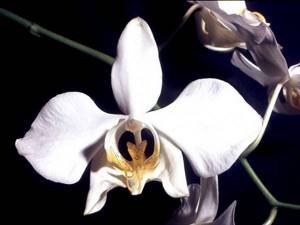
Phalaenopsis Amabilis (Phalaenopsis Amabilis)
Phalaenopsis Amabilis has four to eight fleshy, oblong, dark green leaves ranging from 35 to 50 cm in length and up to 12 cm in width. The vaginal leaves are arranged in two rows. Inflorescences are formed on flexible, slightly curved peduncles of decent length (up to one and a half meters). If the peduncle is cut just below the first flower, a replacement peduncle will form. Its flowers are white, large, up to 10 cm in diameter. This orchid is the progenitor of numerous hybrid varieties, as it is considered the most suitable species for crossing. The flower lip can have various shades of snow-white, pink or yellowish color. Up to 20 flowers are formed on the peduncle at the same time, but they open alternately. The aroma of flowers is pleasant and subtle. Flowering lasts up to four months, from October to March, when peak flowering occurs.
Schilleriana
Phalaenopsis Shilleriana
In Phalaenopsis Schiller, the underside of the leaves has a reddish-brown tint, and the upper surface is painted with alternating dark green and silver-gray spots, merging into irregular transverse stripes. In the Philippines, the homeland of this flower, it is called “Tiger”. The roots of this variety are not round, like other Phalaenopsis varieties, but flat, silver-green in color. The peduncle has a red-brown color and many branches. The flowers are slightly smaller, up to 7 cm in diameter, but there are much more of them on tall, up to one and a half meters in length, peduncles.
During flowering, depending on the age of the flower, up to 200 or more purple or pale pink flowers up to 9 cm in diameter can bloom on it. Flowering is not only abundant and fragrant, but also long-lasting. Moreover, with comfortable maintenance, this orchid is capable of blooming from May to February, almost continuously. Peak flowering occurs in the winter months. Over time, in conditions of high temperature and humidity, so-called babies appear in large numbers instead of flowers. The flower takes on a very spectacular cascading appearance. Its decorative value among gardeners is very high. Loves diffused light.
Stuart (Stuartiana)
Phalaenopsis Stuartiana
This orchid variety is named after the breeder Stuart. A distinctive feature is the variegation of its leaves and the color of its roots - they are silver in color. The branched peduncle reaches 80 cm in length, is curved in different directions and is covered with numerous buds, up to 60 at a time. The flowers do not exceed 7 cm in diameter. The petals are white with reddish spots at the base. In the center of the flower there is an amber lip, smoothly turning from golden to purple. Flowering from January to March. After flowering it likes to rest for a short time.
Sandera (Sanderiana)
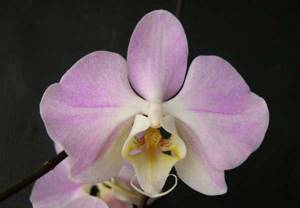
Phalaenopsis Sanderiana
The variety is named after the botanist G. Sander. It is considered the rarest, most beautiful and expensive species of Phalaenopsis. It has tall, up to 80 cm, drooping peduncles with many, up to 50 flowers, up to 8 cm in diameter. Petals can be of different colors. Its leaves are also beautiful. There are up to 6 of them on a plant. They are hard, dark green, with small light specks. Peak flowering occurs in spring and summer. With comfortable maintenance (temperature 29-34 degrees during the day, 21-23 degrees at night, humidity 75-80%) it can bloom all year round.
Gigantea
Phalaenopsis Gigantea
Phalaenopsis Giant is distinguished by the impressive size of its leaf blades. Their length reaches a meter. The length of the peduncle can be up to 40 cm. It produces about 30 medium-sized flowers, up to 7 cm in diameter. The flowers exude a sweet citrus aroma. The color of the petals varies: from milky cream to yellow-green with dark brown streaks and spots. This variety of orchid is very malleable, and breeders often use it for crossing and breeding new hybrids.
Staghorn (Cornu-Cervi)
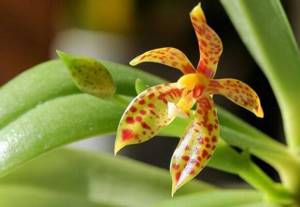
Phalaenopsis Cornu-Cervi
Phalaenopsis Staghorn received its name for the appearance of a perennial peduncle, reminiscent in structure of deer antlers. Its tip is flattened, and comb-like outgrowths are formed in places where flower buds form. The leaves are light green, fleshy, blunt-pointed. There are up to 6 of them. Arranged alternately. Their length is up to 20 cm, width - about 5 cm. The length of the peduncle varies - from 10 to 40 cm. The older the orchid, the longer the peduncle. Depending on this, the number of flowers is also different, but no more than 15 at a time. The flowers are small, about 5 cm in diameter, golden-red in color with brown spots. Blooms at any time of the year.
Hieroglyphica
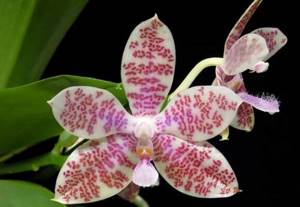
Phalaenopsis Hieroglyphica
The Phalaenopsis Hieroglyphica orchid has leaves and peduncles of the same green color and size - about 30 cm. The leaves are green, shiny, 30 cm long and 9 cm wide. There are from two to eight of them on a plant. The peduncle is 30 cm in height, sometimes branches. From three to 6 flowers are formed on each branch. Healthy flower stalks are able to bloom again. Flowers, 3–4 on each peduncle, open almost simultaneously and bloom for about a month. The white waxy petals have numerous lemon-yellow dots or strokes that look like hieroglyphs. The flowers have a pleasant aroma.
This may be interesting: Types and varieties of Dendrobium orchids
Ambonian (Amboinensis)
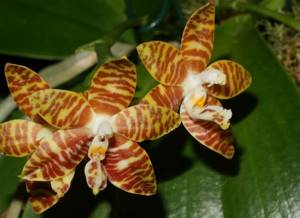
Phalaenopsis amboinensis
Phalaenopsis Ambonese has 3 to 5 elliptical or oblong leaves up to 25 cm in length. The peduncle is curved, up to 25 cm in length. Capable of producing a new peduncle annually, old peduncles lengthen every year, sometimes branching. Each peduncle has several flowers, but they bloom one at a time, maximum two at a time. Since the flower stalks remain on the bush for several years, more and more flowers bloom on the plant every year. Flowering occurs constantly, its peak occurs in the summer months. The color of the petals is variegated: transverse stripes of a reddish brick color are drawn on a cream, lemon-yellow or orange-yellow background.
Pink (Rosea)
Phalaenopsis Rosea
This is a miniature type of orchid. It has small, up to 3 cm in diameter, white or pink flowers. The peduncle of Phalaenopsis Pink reaches a maximum of 30 cm in height. There are about 15 flowers. The dark green leaves have a reddish tint on the underside. They are about 15 cm long.
Parisha (Parishii)
Phalaenopsis Parishii
This lovely milky white Phalaenops orchid variety is a miniature species. Its stem is short and always covered with leaves. The root system is well developed. When kept comfortably, it produces several flower stalks at once, no higher than 15 cm in height. The dark green leaves are slightly longer - up to 18 cm. Up to ten milky-white flowers are simultaneously formed on the peduncle. Their aroma is pleasant, has a fruity-candy smell. The structure of the flower is interesting in that it consists of a very wide lip, the middle lobe of which is colored purple or lilac. The flowers of this variety are the tiniest, about 2 cm, but fragrant and long-lived.
Horse (Equestris)
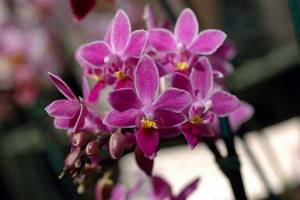
Phalaenopsis Equestris
Phalaenopsis Horse is a miniature species. It has a very short stem and succulent, paired leaves that are dark green on top and reddish on the underside. The leaf length does not exceed 15 cm in length and 7 – 8 cm in width. With comfortable maintenance, it can bloom almost all year round. Peak flowering occurs in spring and autumn. The gracefully curved peduncle of dark purple color is no higher than 30 cm. From 10 to 15 flowers are formed on it. As it grows, new buds appear alternately at its tip. Old flowers gradually fall off. The flowers are pale pink or purple and have a diameter of two to three centimeters. Flowering continues for several months. The old peduncle should be cut off only if it begins to dry out on its own.
Lueddemanniana
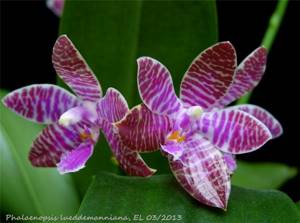
Phalaenopsis Lueddemanniana
The variety is named after the French breeder and orchid lover F. Ludemann. Refers to miniature types of orchids. Light green or salad leaves of an elliptical shape are from 10 to 20 cm long and 12 cm wide. A peduncle of the same length or slightly higher forms from 5 to 7 buds. The corollas are fragrant, with a dense texture. The flowers bloom alternately and have a diameter of 3 to 7 cm. The petals are small, dense, with a waxy appearance. Moreover, they are smaller than sepals. Their coloring is remarkable: on a white background there are intermittent purple, violet-pink or chestnut stripes, and the three-stripe small lip has a bright amethyst center. Blooms in spring and early summer. Adult specimens bloom all year round. The aroma of flowers is pleasant. When grown indoors, it requires up to 80% humidity and high temperature.
Mini Mark “Maria Teresa”
Phalaenopsis Mini Mark “Maria Teresa”
This variety is considered a masterpiece of mini-Phalaenopsis. A neat rosette consists of green leaves, 10-15 cm in length. The flowers are small, up to 4 cm in diameter, white, lightly spotted with yellow, orange or pink with an orange-brown lip. Flowering lasts up to three months.
Amsterdam Jordan
Phalaenopsis Amsterdam Jordan
A rare variety with bright pink flower petals with dark specks. The lip is colored cherry. The basal rosette is formed from two-row growing fleshy leaves of a rich green color. The variety was developed in the last century and is still popular.
Taiwanese hybrids
Taiwan has become a modern center for the selection and industrial cultivation of numerous hybrid varieties. It was here that the unusually beautiful “harlequin” varieties were bred with bright spotted patterns on the petals in the form of ripples of dashes or dots, merging blots, tiger or leopard coloring. Their flowers look like works of art by oriental calligraphers.
Phalaenopsis Harlekin
Taiwanese breeders can also boast of the so-called Novelty-phalaenopsis hybrid varieties. They are distinguished by a particularly compact rosette, growing numerous peduncles raised above the leaves. The flowers have a regular star-shaped shape, complex colors with all kinds of designs and patterns. The flower petals have a shiny varnish texture. The following hybrids belong to Novelty phalaenopsis: Phalaenopsis Misty Pride “CR”, Phalaenopsis l-Hsin Spot Eagle “Montclair”, Phalaenopsis Prefection In “Chen”, Phalaenopsis Nobby's Pacific Sunset “Red Pearl”, Phalaenopsis Brother Pirate King “Sapphire Dragon”.
One of the varieties of Novelka-Phalaenopsis
Phalaenopsis variegated
A huge number of varieties and species of orchids suggest the same diversity in the shape, size and color of Phalaenopsis leaf blades. As a rule, standard hybrids have rather large, green, matte leaves. But increasingly, not only silver, light green and dark purple, shiny like silk, or waxy-matte leaves are found, but also variegated ones.
This may be interesting: Diseases and pests of the Phalaenopsis orchid
Moreover, sometimes this is a natural color, and in other cases, variegated leaves appear as a result of mutation, when there is no chlorophyll in some areas of the leaf blade. For example, on the green leaves of Phalaenopsis there is a wide yellow stripe running down the center, or a light border runs along the edge of its leaves. Such variegated leaves are found in some clones of Phalaenopsis amabilis, Phalaenopsis aphrodite, as well as Phalaenopsis Matou Freed “M”, miniature Doritaenopsis Sogo Yenlin “Variegated Leaves”, Phalaenopsis Sogo Vivien “Variegated”.
One of the variegated Phalaenopsis - Phalaenopsis Philippinensis
True variegated Phalaenopsis hybrids:
Phalaenopsis philippinensis (Phalaenopsis philippinense), Phalaenopsis schilleriana (Phalaenopsis schilleriana). They pass on the spotted leaf pattern to their primary hybrids, which adds to their attractiveness. Two small natural species, Phalaenopsis lindenii and Phalaenopsis celebensis, have variegated leaves. If you decide to collect Phalaenopsis with variegated leaves, you can get an excellent picturesque collection.
Phalaenopsis with a special aroma
Palaenopsis Bellina
The aroma of a flower is sometimes decisive in choosing a Phalaenopsis orchid variety. It complements and reveals the overall picture of any flowering plant. Owners of such natural Phalaenopsis species as Phalaenopsis amabilis, Palaenopsis bellina, Phalaenopsis mariae, Phalaenopsis venosa enjoy fragrant blooms. It is these plants that nature has endowed with a wonderful aroma. Only thanks to them, breeders have the opportunity to obtain hybrids with fragrant flowers of unforgettable beauty.
What kind of care does an orchid like?
At home, an orchid needs special care; first of all, you need to provide it with sufficient lighting. In the summer there will be no problems with this, but in the winter you will have to think about additional lighting. You cannot leave the flower in direct sunlight, it will simply burn.
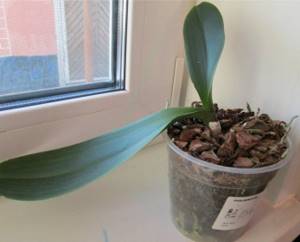
The temperature of the room where the orchid grows is no less important. Some plant species bloom beautifully even at +30 degrees in summer, and in winter at +16 degrees. These include Phalaenopsis and some other tropical species.
Favorable air humidity for an orchid is no more than 65%. It is not recommended to spray it, as this can develop various plant diseases; it is better to buy an air humidifier.
You should not water the flower abundantly, as excess moisture will cause the roots to rot. In summer, watering twice a day will be enough, after the soil is completely dry.
Replanting an orchid is not difficult; to do this, it is carefully removed from the pot and, together with its substrate, placed in another pot, while adding a small amount of soil to the bowl.

The pot must have holes at the bottom to allow the soil to breathe well. It is recommended to use clay or ceramic pots. After transplantation, the plant should not be watered for 3-4 days.

An orchid blooms under normal conditions twice a year, in spring and autumn. You need to treat this type of plant with care, make sure that it does not get sick or burn out in the sun. Orchid is very sensitive to negative factors.

The main diseases of such a flower are powdery mildew, root rot, sooty fungi and other diseases. If you notice that it does not bloom, it means that the conditions in which it is kept are not favorable for it.
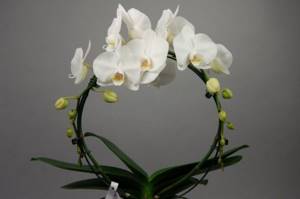
Orchids of the catasetum group
The group belongs to the ancient and large family of Orchids or Orchids , the appearance of representatives of which on Earth dates back to the Late Cretaceous period. The group itself includes 5 genera, many natural species, as well as various hybrids that orchids easily create among themselves.
A distinctive feature of this group is the pronounced period of winter rest of the plant, which in natural growing conditions coincides with the end of seasonal rains and lower temperatures. Winter dormancy means the shedding of leaves and the plant entering the pseudobulb phase , which to European gardeners looks like a carrot. This is where the second name comes from - carrot orchids.
To Latin American orchid lovers, these formations are more like a cigar with a pointed tip. Orchids use the summer period for fairly active growth and flowering.
Orchids of the catasetum group during hibernation.
The group includes the following genera:
- catasetum proper;
- dressleria;
- cycnoses;
- clovesia;
- Mormodes.
Orchids differ in types, shapes and structure of the flower itself, but the main thing that made it possible to combine them into one family is the structure of the plant itself.







